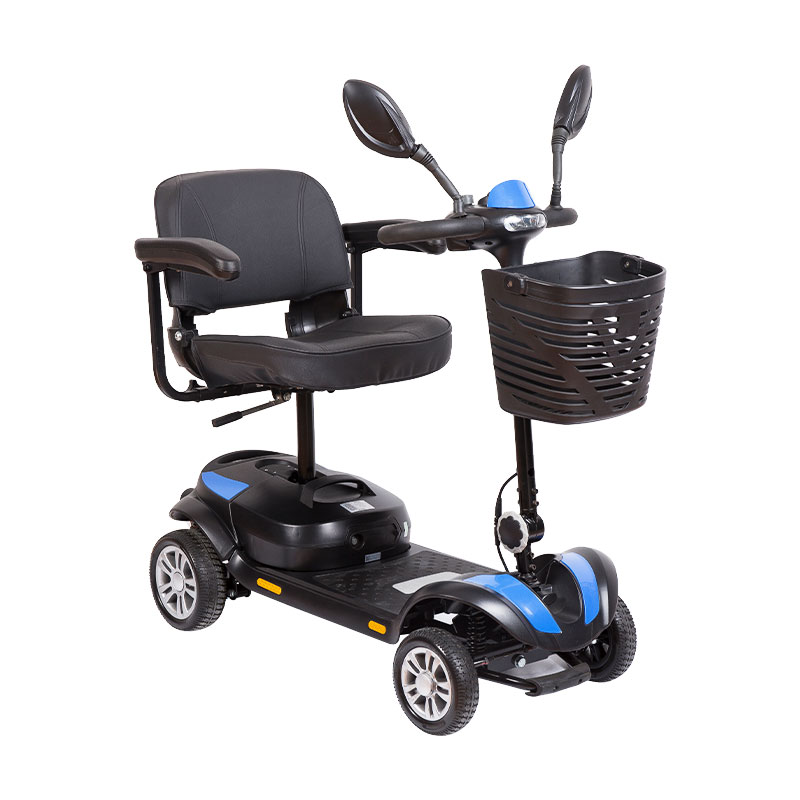What is the frame material used in the construction of the 4 wheels elderly mobility scooter?
The frame material used in the construction of a 4-wheel elderly mobility scooter is crucial for ensuring durability, strength, and overall performance. The most common materials used for the frame include:
Aluminum:
Lightweight: Aluminum is relatively light, which makes the scooter easier to handle and transport.
Corrosion-Resistant: Aluminum is naturally resistant to rust and corrosion, which is beneficial for longevity, especially if the scooter is used outdoors.
Strong and Durable: Despite being lightweight, aluminum provides good structural strength and durability.
Steel:
High Strength: Steel frames are very strong and can support heavier loads, making them suitable for users who require a more robust scooter.
Durability: Steel is highly durable and can withstand significant wear and tear.
Corrosion Resistance: Often, steel frames are treated with a powder coating or other protective finishes to prevent rust and corrosion.
Carbon Fiber (Less Common):
Very Lightweight: Carbon fiber is much lighter than both aluminum and steel, which can significantly reduce the overall weight of the scooter.
High Strength: Carbon fiber is exceptionally strong and offers a high strength-to-weight ratio.
Expensive: Due to the cost of materials and manufacturing processes, carbon fiber frames are generally more expensive and less common in standard mobility scooters.

Factors Influencing the Choice of Frame Material:
1. Weight Capacity:
The chosen material needs to support the weight of the user plus any additional load (e.g., personal items, shopping bags).
2. Cost:
Aluminum is typically more affordable than carbon fiber but may be more expensive than steel.
3. Intended Use:
Scooters designed for outdoor use may benefit more from aluminum or treated steel due to their corrosion resistance.
4. Portability:
Lightweight materials like aluminum and carbon fiber are preferred if the scooter needs to be frequently transported or stored.
5. Durability and Longevity:
Both aluminum and steel are durable, but aluminum's resistance to corrosion gives it an edge for longevity, especially in varying environmental conditions.
6. Manufacturing and Design:
The ease of manufacturing and the ability to mold the material into the desired frame design also play a role. Aluminum allows for more flexibility in design due to its ease of fabrication.
Examples of Frame Material in Use:
Aluminum Frame Scooters:These are popular for their balance of strength, weight, and corrosion resistance. Ideal for users who need a reliable, lightweight option.
Steel Frame Scooters:Often found in more robust, heavy-duty models designed for higher weight capacities and tougher usage conditions.
Carbon Fiber Frame Scooters:Less common but available in high-end models where minimizing weight is a top priority, despite the higher cost.
The frame material used in the construction of a 4-wheel elderly mobility scooter is typically aluminum or steel, with each material offering distinct advantages in terms of weight, strength, and durability. The choice of material depends on various factors including the intended use, user requirements, and cost considerations.


 English
English Deutsch
Deutsch







-3.jpg?imageView2/2/format/jp2)
.jpg?imageView2/2/format/jp2)






